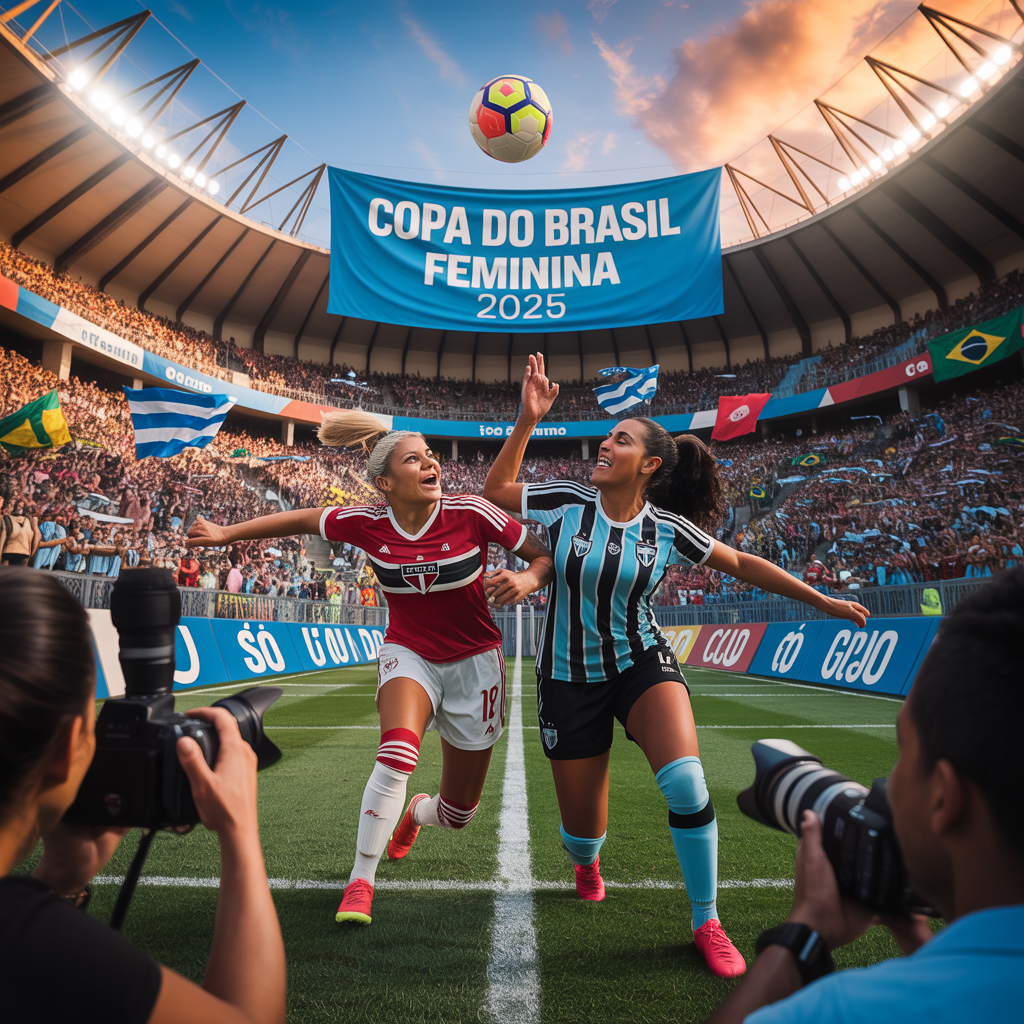After an eight-year hiatus, the Copa do Brasil de Futebol Feminino — Brazil’s national women’s football cup — has made its much-anticipated return in 2025, marking a new era for the sport in the country.
With a doubled number of teams, enhanced media coverage, and institutional backing, the 2025 edition signifies Brazil’s commitment to strengthening women’s football at both the elite and grassroots levels.
Why the Return Matters
The Brazilian Women’s Cup was last held in 2017, before being discontinued to focus on league development. Its return comes amid growing global attention to women’s football, spurred by:
- Historic viewership records during the 2023 FIFA Women’s World Cup
- The rise of professional women’s leagues in Europe and South America
- Increased advocacy for gender equity in sport
According to CBF President Ednaldo Rodrigues:
“The return of the Copa do Brasil Feminina represents more than a competition. It’s a structural advance to ensure opportunities for women footballers in all regions of Brazil.”
Key Changes in the 2025 Edition
✅ Expansion of Teams
- From 32 teams in 2017 to 64 teams in 2025
- Inclusion of clubs from all 26 Brazilian states plus the Federal District
- Mandatory participation of teams linked to Serie A and B men’s clubs, promoting infrastructure sharing
✅ Professionalization Incentives
- All participating clubs receive financial grants for logistics and athlete support
- Prize money increased by 150% compared to 2017 levels
- New regulations requiring medical staff and licensed coaches for all teams
✅ Enhanced Broadcast Coverage
- Matches streamed live on CBF TV and broadcast via Sportv and Band
- Dedicated social media coverage with real-time highlights and behind-the-scenes content
- Collaborations with influencers to promote women’s football narratives
Early Highlights from the 2025 Tournament
As of May 2025, the tournament has already delivered thrilling encounters and emotional moments:
- São Paulo FC and Grêmio emerged as early favorites, with dominant performances in the first rounds
- Underdog teams like Vila Nova-GO and Ceará SC pulled off surprising upsets against top-tier sides
- Attendance records broken at multiple venues, with over 20,000 fans attending matches in São Paulo and Recife
One of the most emotional scenes came after Vila Nova’s victory, as player Letícia Silva declared:
“We’re showing that small clubs can dream big in women’s football too.”
Impact on Grassroots and Youth Development
The cup’s revival has already inspired:
- A 30% increase in youth girls’ registrations in local football academies
- State federations launching new U-17 and U-20 tournaments for women
- Enhanced visibility for coaches and referees in the women’s game
The CBF also announced partnerships with educational institutions to develop leadership programs for women in sports management.
Commercial Growth and Sponsorship
Sponsors are embracing the tournament’s return:
- Nike and Adidas have launched special edition kits for several clubs
- Beverage brands and telecom companies have signed broadcast sponsorship deals
- Local businesses are sponsoring community fan zones and match-day experiences
This commercial success underscores the growing market potential of women’s football in Brazil.
What’s Next for the Competition?
The quarterfinals are scheduled for August 2025, with the final set to take place at the iconic Maracanã Stadium in October.
Key storylines to watch:
- Can São Paulo FC claim its first national cup title?
- Will an underdog team make a Cinderella run to the final?
- How will the expanded format influence long-term league competitiveness?
Conclusion: A New Chapter for Brazilian Women’s Football
The return of the Copa do Brasil Feminina is more than the reestablishment of a tournament — it’s a catalyst for systemic growth, representation, and empowerment in Brazilian sport.
With expanded opportunities, professional standards, and passionate fan engagement, 2025 marks a pivotal moment in ensuring that women’s football in Brazil continues to rise, inspire, and thrive.
